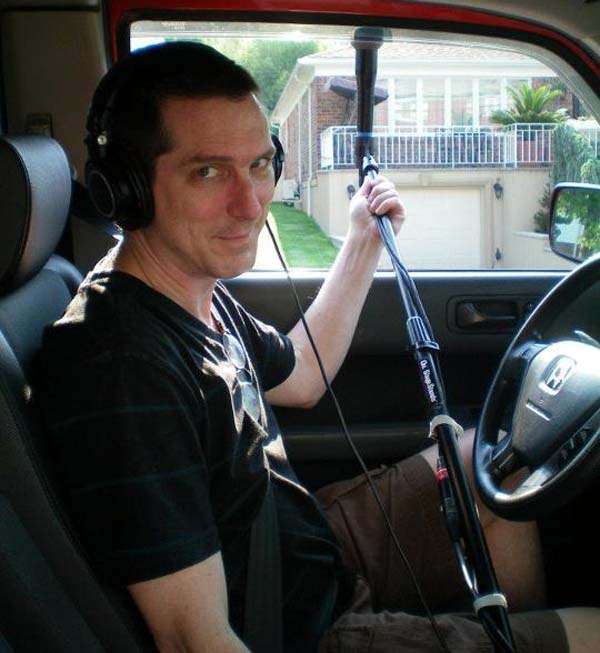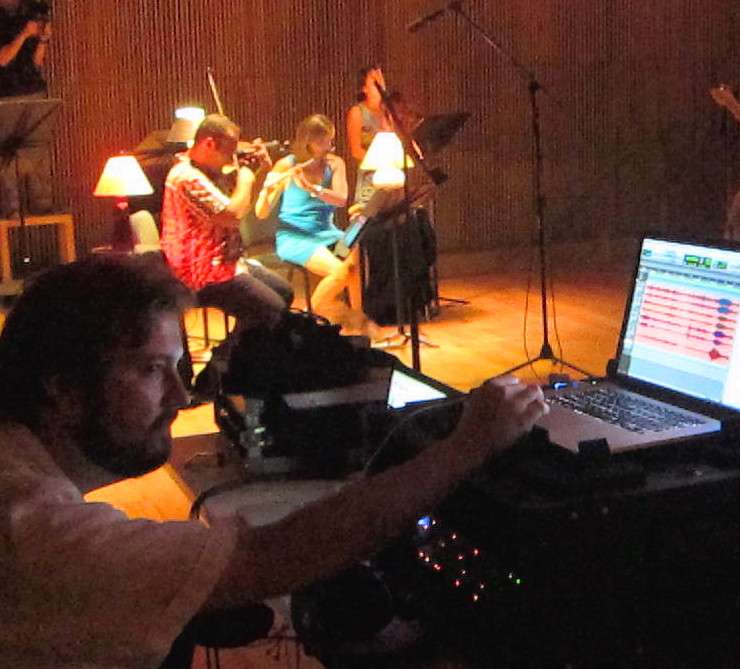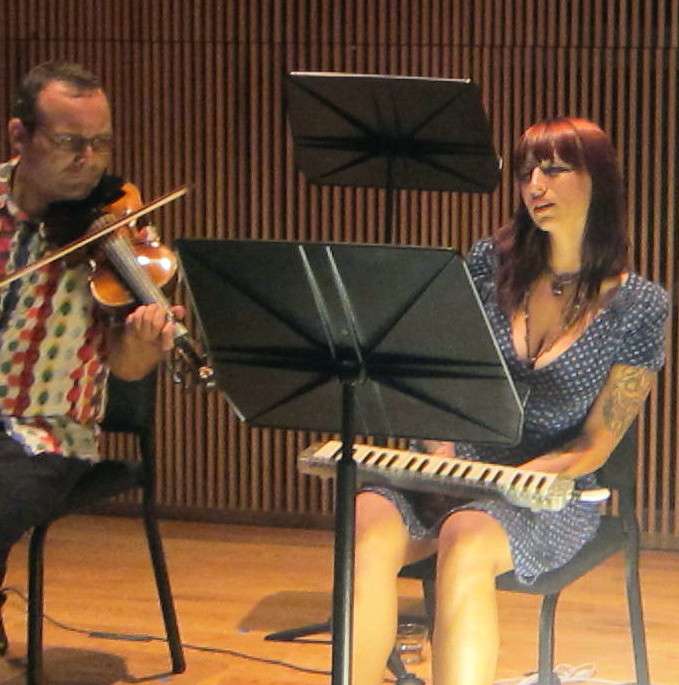|
Back
John Cage Redux New York
Mary Flagler Cary Hall, The DiMenna Center (Baryshnikov Arts Center), 450 West 37th Street\
08/21/2012 - & August 22, 23, 2012
Kevin James: 100 Waltzes for John Cage
the [kāj] ensemble: John Ferrari (Percussion), Margaret Lancaster (Flute), Eileen Mack (Clarinet), Lev Zhurbin (Viola), Thomas Ulrich (Cello), Kevin James (Composer/Trombone), Esther Noh (Violin), Herb Robertson (Trumpet), Daisy Press (Voice/keyboard)

K. James (© Courtesy of the Artist)
The [kāj] ensemble, a homophonic name celebrating John Cage, laid its credo out with candid simplicity. They are “drawn to risk-taking” and “unafraid of anything new, dramatic and original.” And their first performance last night, showed that this was pure understatement.
The 90-odd minutes of music was certainly one of the more moving experiences of the New York concert scene. That is, each of the nine musicians moved around four playing-areas in the 4,000 square-foot auditorium, apparently spontaneously, sometimes stopping in the miscellaneous arrangement of seats to sit and play. At times they moved and played together (sort of). More often they joined their colleagues and fiddled, blew, sang warbled their own music.
It was equally moving for us, the [kāj] ensemble’s first audience. We had the choice of sitting and facing one of the four groups or moving around as if an art exhibition, gazing, yawning (one audience member simply stretched out and slept). The artists didn’t care who was peering over their shoulders, for they had their own waltzes to play and improvise.
The sounds, at their densest were nine different tunes from the accomplished nonet. But this was only the beginning. For each of the room corners had a giant speaker, and two sound engineers played–as a background–any of hundreds of New York sounds, sometimes reaching peaks of loudness, but more often a low roar, as if in a solar-wind tunnel with moments of voices or water.

Sounds and music (© Coco T.Dawg)
The whole tapestry was conceived by Kevin James, an iconic figure in New York music. His raison d’être was based on John Cage’s own innovations, even his I-Ching modus operandi.
The entire tapestry was a creation of trombonist-composer Kevin James, who wanted to celebrate John Cage’s 100th birthday in style. Cage had once composed a piece based on locations in New York but James did him one better. I quote from the news release now): “Using Cage’s favored I-Ching methodology to achieve precise GPS locations, James created field recordings at 147 locations throughout the city.”
Add to this the nine excellent musicians, who had, on their IPads waltzes (or near waltzes), which would present the “100 all-time greatest waltzes” that were sometimes recognizable, more often not. And almost never in tandem with anybody else playing. It began with a percussion oom-pah-pah, and proceeded to some amiable, never unpleasing anarchy

L. Zhurbin, D. Press (© Coco T. Dawg)
The result of this most intriguing, original and sorta sassy program? Well, the aura was virtually therapeutic. Just as the musicians could walk around where and when they wanted, we could as well. We could meander around the stages, read the IPads, peer around the musicians, take pictures (without a disturbing flash). We could whisper our comments. Everybody relaxed, had a good time.
Musically, too, we could hear some surprises. A solo flute might tootle Chopsticks, violin and viola might play some canons around each other, vocalist Daisy Press would take a deep breath on her mouth-driven keyboard, then begin to sing or make soprano noises. Trombonist Kevin James didn’t have to oversee his musicians, but obviously, as he strolled from staging area to staging area, he kept an eye (or an ear) on them.
Third, John Cage would have loved it. Because he loved every innovation. He would have loved how electronic techniques could contribute things he could never have dreamed. (I take that back: John Cage probably dreamed everything he needed to dream.)
For myself, I had one question. Was I supposed to think about the music, consciously experience the sounds, actively watch the dramatics? Or was I supposed to lose myself in the music, turn my mind into a Zen-style mindlessness, immerse myself in the musical murals?
I tried both ways, neither successfully. In fact, at a certain point quite early on, 100 Waltzes For John Cage started to resemble (what I think) is the most useless music of all. 1950’s style cool jazz played in a restaurant, while people are eating and paying scant attention. The musicians may be good, but the cohesion with the audience of diners is sporadic at best. Worthy of applause, yes, but something of a waste.
Is this unfair? I guess so. But all is not lost. The [kāj] ensemble has such top-rate (and obviously adventurous) musicians that this writer will be in attendance at their next performances. Adventures may not always include climbing Mount Everest, but the promises of chance-taking are very heady incitements.
Harry Rolnick
|